Analysis: Dissecting Seahawks' Coverage Busts
The Seahawks' coverage busts and overall generosity was supposed to be over. The season of giving was meant to be 2020, specifically in the first half of the schedule. Yet, in their 2021 Week 3 loss to the Vikings, Seattle’s defense was out there doing its best Santa Claus impression once more.
“Frustrated, disappointed,” Seahawks defensive end Carlos Dunlap described of the locker room mood in his postgame press conference. “We got out-executed this game and the second half of last game. Nobody loves to see that happen, because we know we have way more ability than we have shown and we have to go do it.”
The talent issues at cornerback are one iceberg for the defense to navigate past. However, what will reliably sink a defense are repeated failures at the basics of successful football: alignment, assignment, technique. Without these three core tenets, everyone is going down.
“We need to have more focus than we’ve had, we need to make sure that we lock in,” linebacker Bobby Wagner assessed on Wednesday.
Minnesota was a talented offense that entered a must-win game with an intelligent gameplan and exited with near-perfect execution. The first coverage bust I'll be covering is an example of that. Seattle likes to try and win gaps back versus 2x2 distributions in its bear front by pressuring via cover 2 fire zones. The Vikings fly motioned into a 3x1 set that stressed the Seahawks.
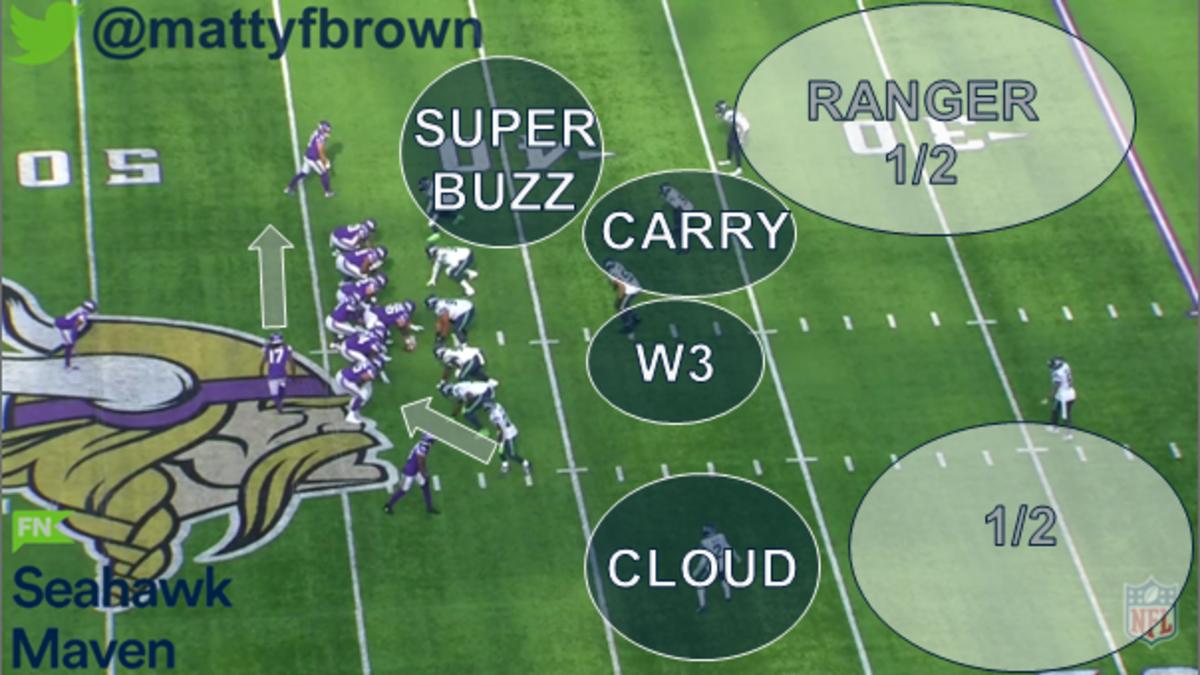
Safety Jamal Adams would have been the carry player, so he matched up with what he thought was the No. 2 receiver as the fly motion turned into a wheel route (Receivers are numbered 1, 2, 3 outside-in). This was a new situation for Adams and he really should have left this receiver as the final No. 1. Plus, he had the super buzz coverage of Jordyn Brooks looking to drop to the No. 1 receiver after the run fake.
Instead, Adams’ method of covering up for Brooks and the fly motion asked too much of Tre Flowers in the ranger 1/2 to make a break across the field after trying to guard his area deep with inside leverage.
Wagner, as the wall 3 player, was occupied by the run fake in the other direction and also shown blocking action. The effect was that the first and second levels of the Vikings’ bootleg concept were open across the field.
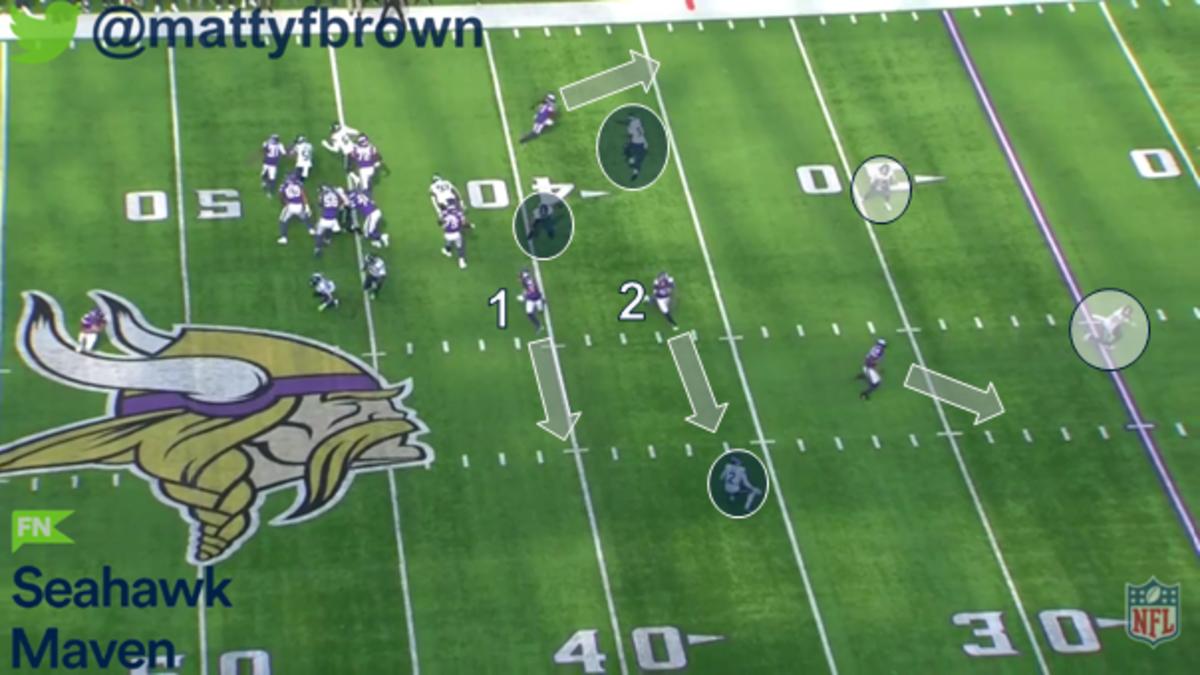
The nice thing about playing cover 2 to these patterns is that it gives you better layers for defeating the three-level floods. That remained true on this play even with the problems Adams and Wagner experienced.
D.J. Reed was outnumbered in his cloud coverage, yet he was in an excellent position to play deep-to-short, minimizing the damage before rallying to the throw to the flat. He had his butt to the sideline with vision across the field and of the quarterback.
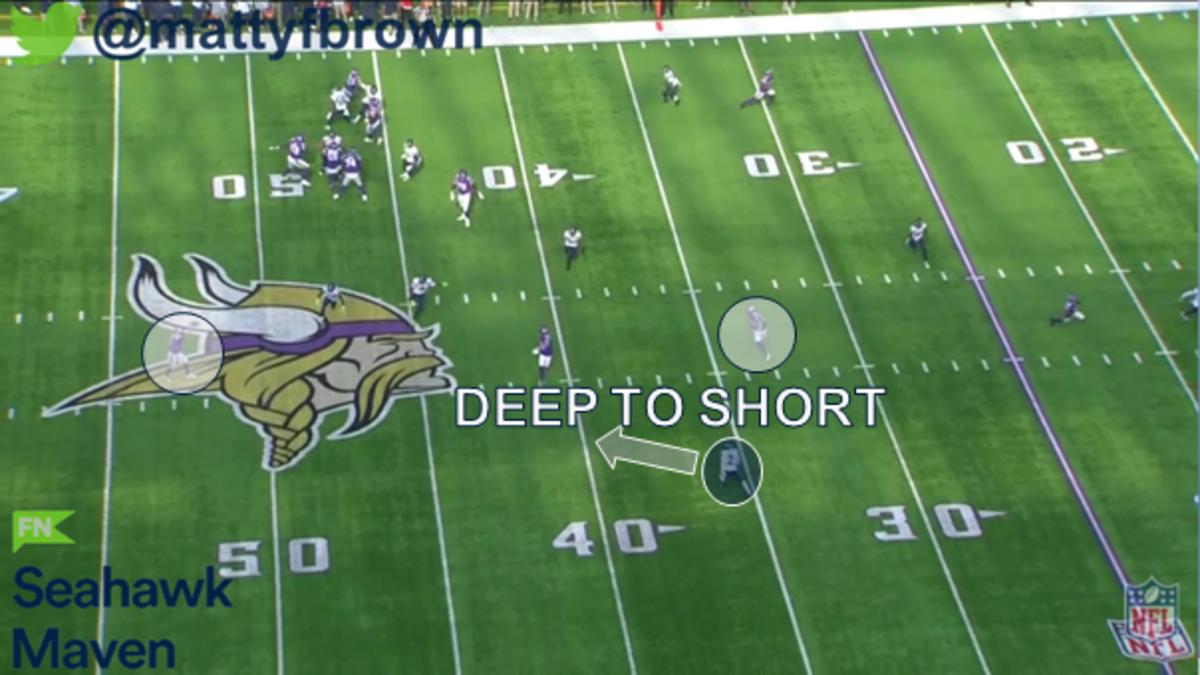
Sadly, Reed was looked off by Cousins and attacked downhill, taking the cheese of the shallow route and allowing the throw in behind to be completed.
Carroll has repeatedly mentioned the importance of the pass rush syncing up with the coverage and vice-versa. None of the issues with the back-end of the coverage here would have mattered if slot corner Ugo Amadi had executed his assignment.
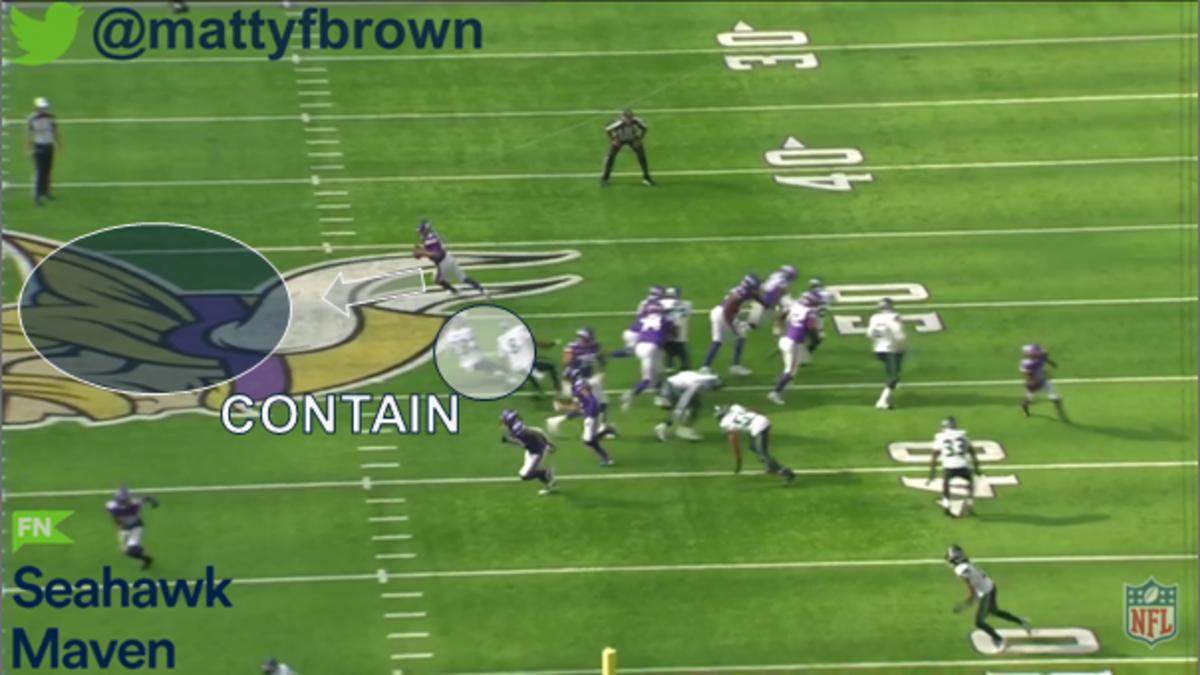
As it was, the Seahawks were eager to get to the wide zone run away. Amadi was the contain blitzer and should have accounted for Cousins’ bootleg. If he had done this, he would have been right in the face of Cousins and essentially rendered the play dead on arrival.
— Ultra Rare Tape (@UltraRareTape) September 30, 2021
When Wagner himself ends up busting basic cover 3 defense, it becomes easier to buy into the theory that the visit to the Vikings was the game from hell for the Seahawks' D.
On the Wagner mistake, Minnesota was smart in that it aligned rapidly in a condensed trips bunch and switch-released from it. This meant that the concept developed quicker and Wagner’s eyes were closer to the deception.
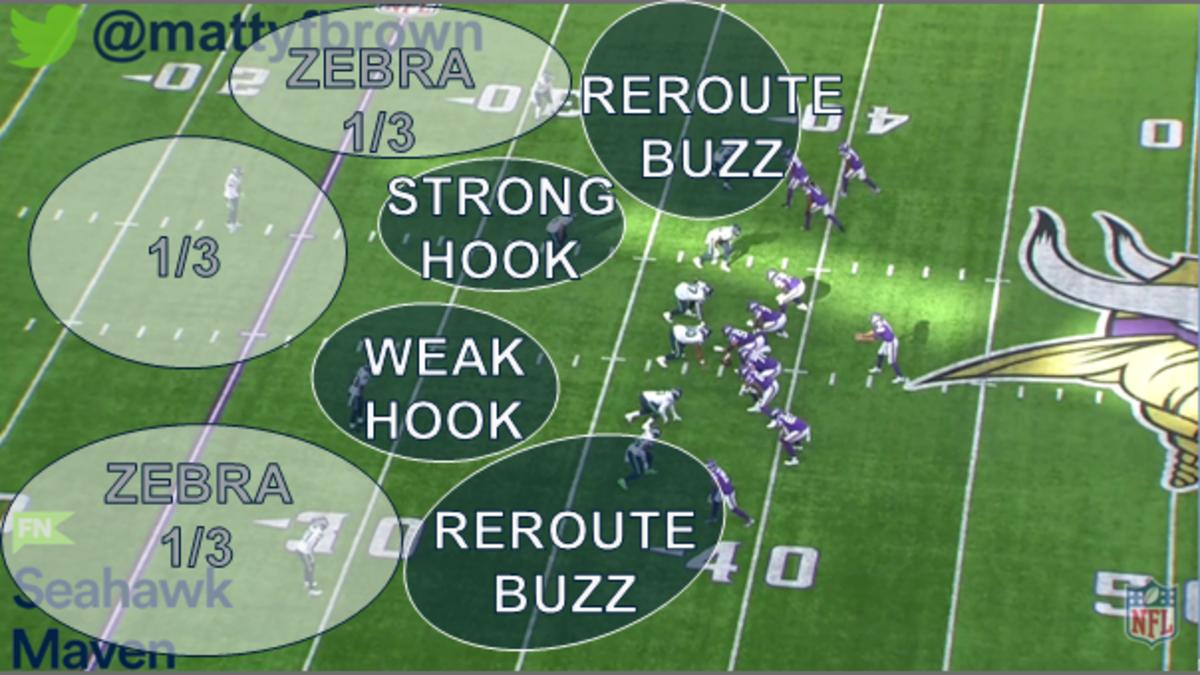
Adams, in the weak hook of 3 buzz weak, took the final No. 3 receiver up and back superbly, as required by the defense. This schematic element does leave more space for any receiver who can clear the strong hook defender.
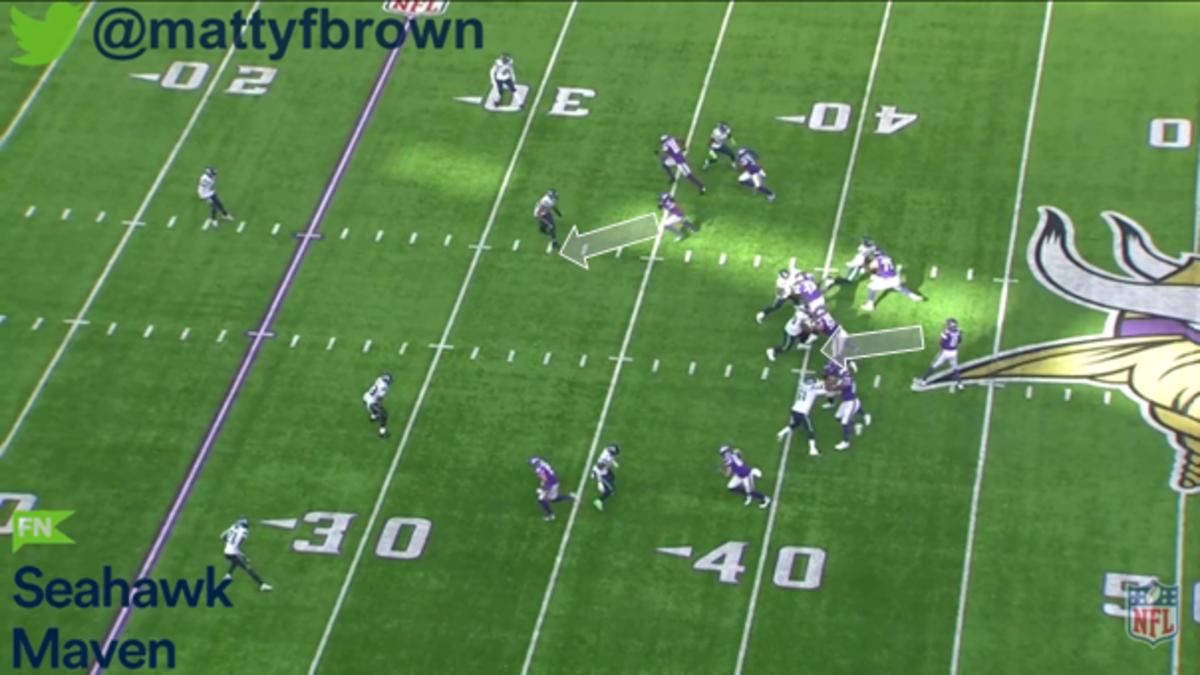
Amadi, in his buzz/curl-to-flat outside space zone, drop played the bunch well and found his final receiver, with Seattle upping its coverage tightness and indicators because of the empty formation. Unfortunately, Wagner was looked by Cousins into jumping down onto the same route, taking the cheese.
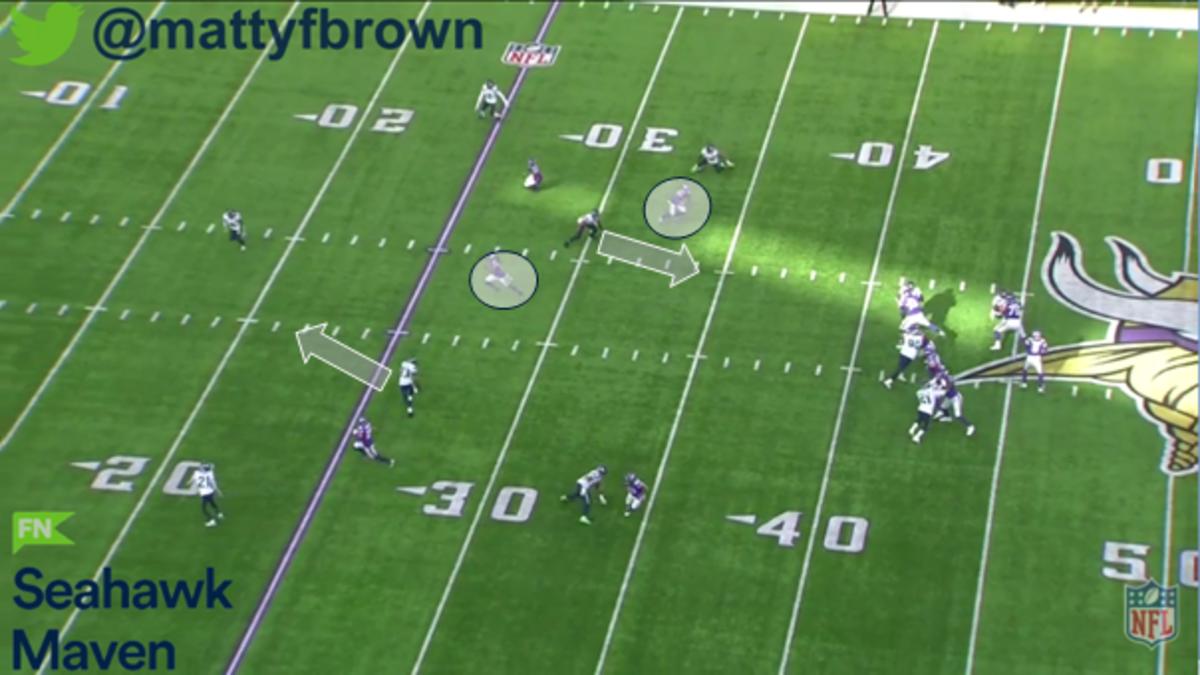
Cover 3 does stress the four underneath zones a lot, asking them to play from high to low. This is especially true of the two interior hook droppers. Seattle never wants these players to chase underneath routes, because it’s highly likely—as was the case here—that there is a route behind them too, with the offense stacking their zone.
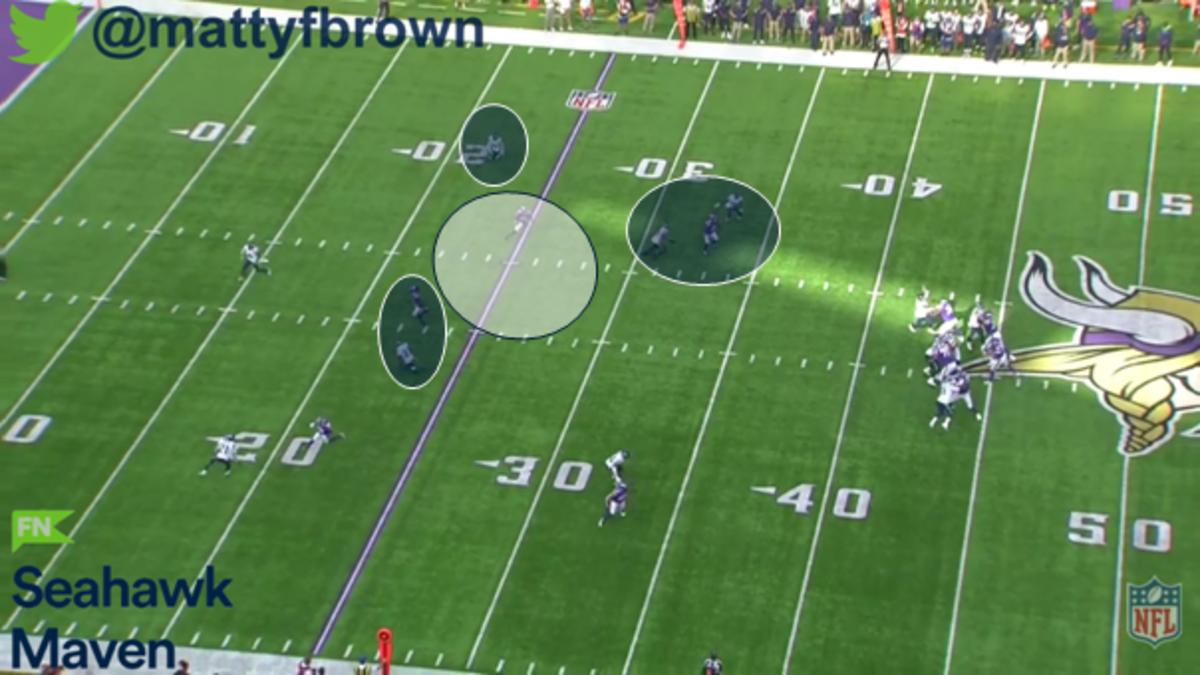
Reed, at right cornerback, was in zebra 1/3 technique to the trips bunch, looking to midpoint the receivers deep. Seattle rarely asks this true zone player to squeeze the No. 1 receiver on the in-cut in three-deep, four-underneath coverage, yet Reed could—perhaps should—have been more aware of the three receiver combination and broke quicker. Regardless, the blame largely falls on Wagner.
— Ultra Rare Tape (@UltraRareTape) September 30, 2021
Reed had a mistake of his own that saw free safety Quandre Diggs end the play fuming at his cornerback. Playing a catch cover 2 cloud technique well, Reed looked to sink back and shrink the honey hole.
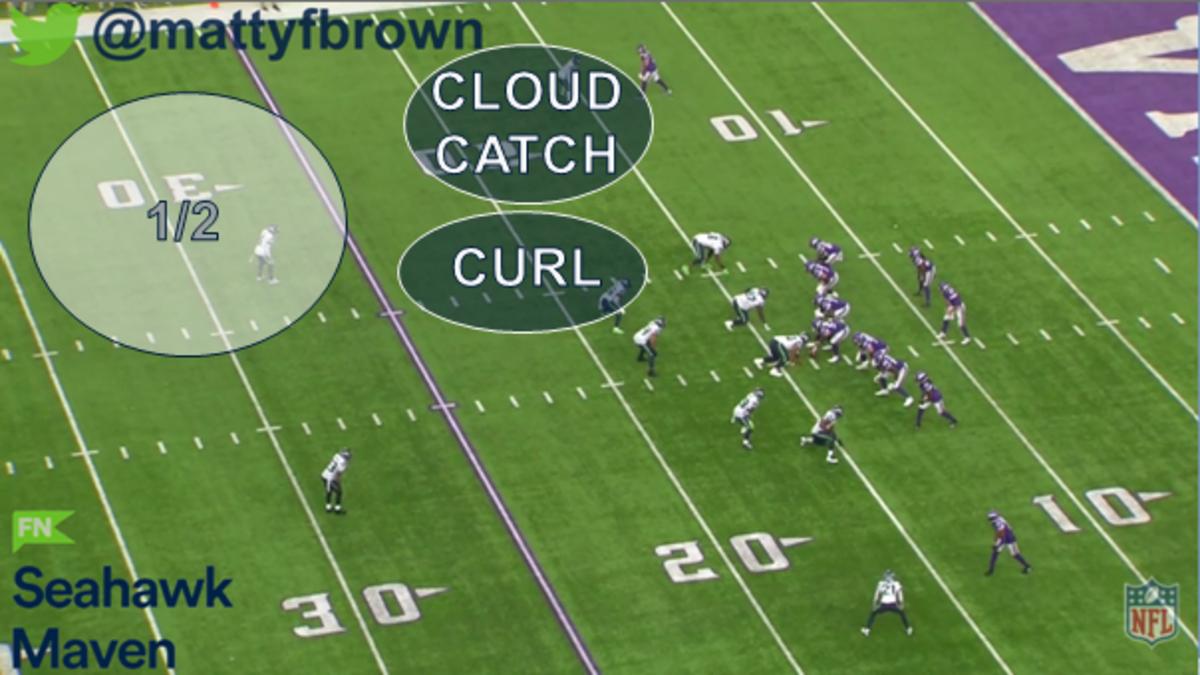
Reed played it perfectly to start off with. And the other underneath player to that side, Brooks, was not threatened by a quick No. 2 receiver to the flat or the running back releasing as a fast No. 3.
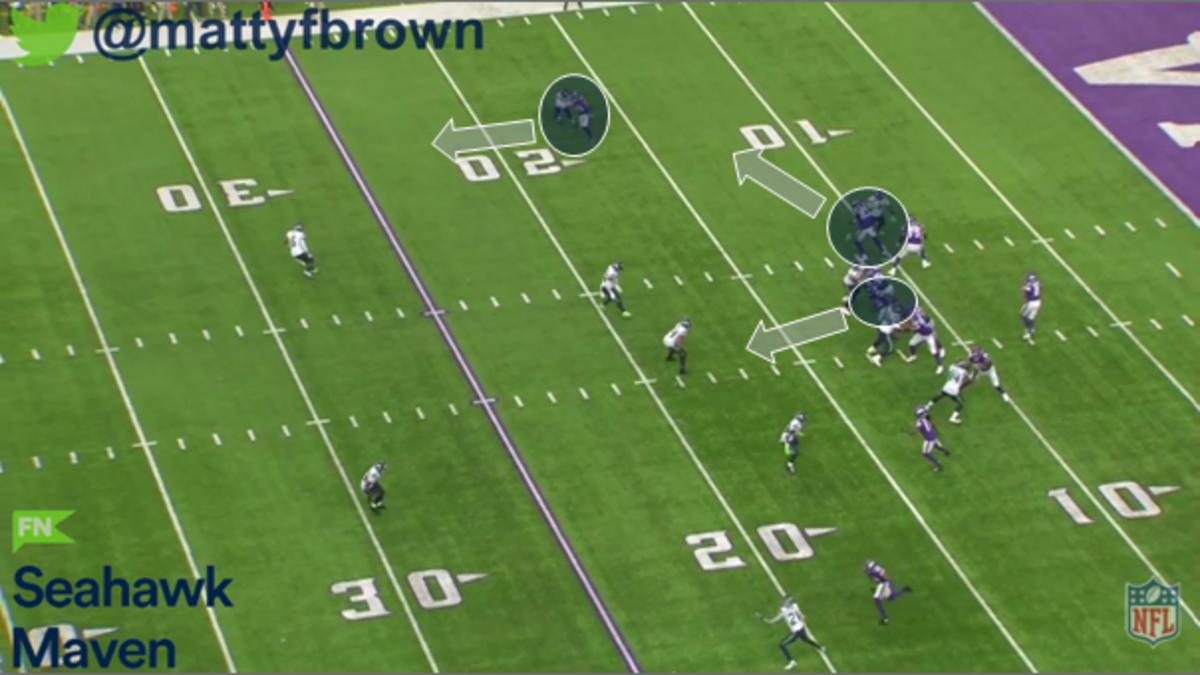
Then everything fell apart. Reed broke on the wrong throw in the air, having an overconfidence in his depth dissuading Cousins from throwing the deeper option and possibly being looked off to the flat late.
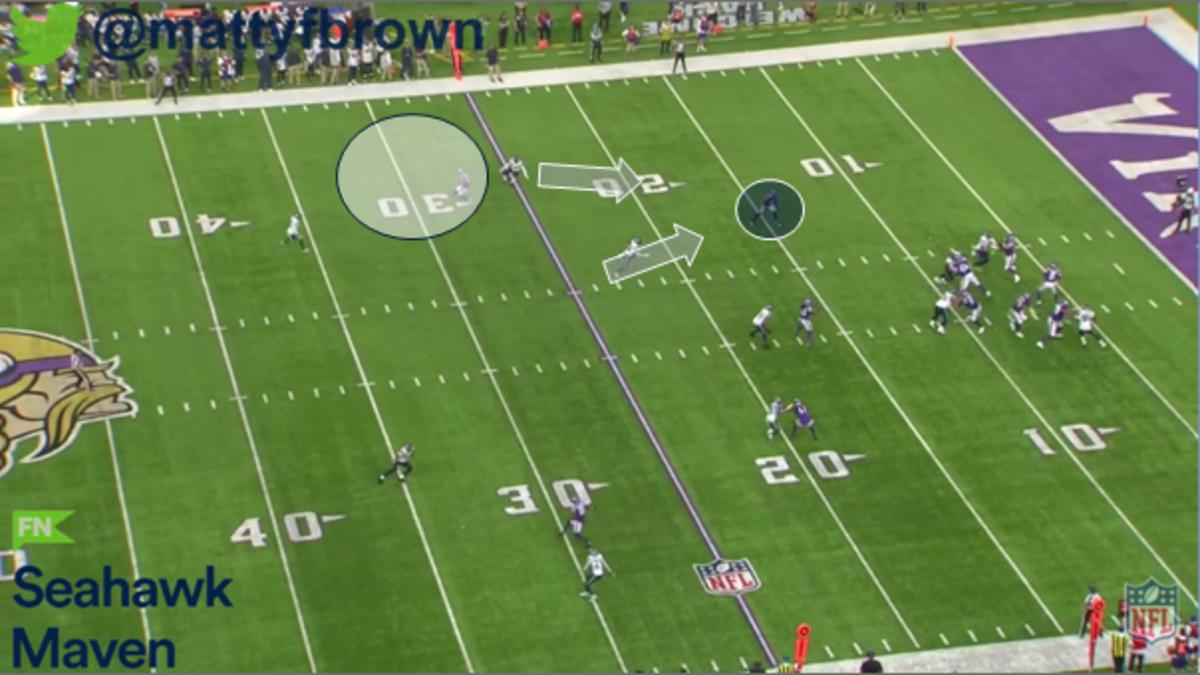
Brooks, too, came down on the flat option, not getting depth into his curl window. Both the underneath players took the cheese, although this remains more on Reed. The result was a cavernous space for the throw.
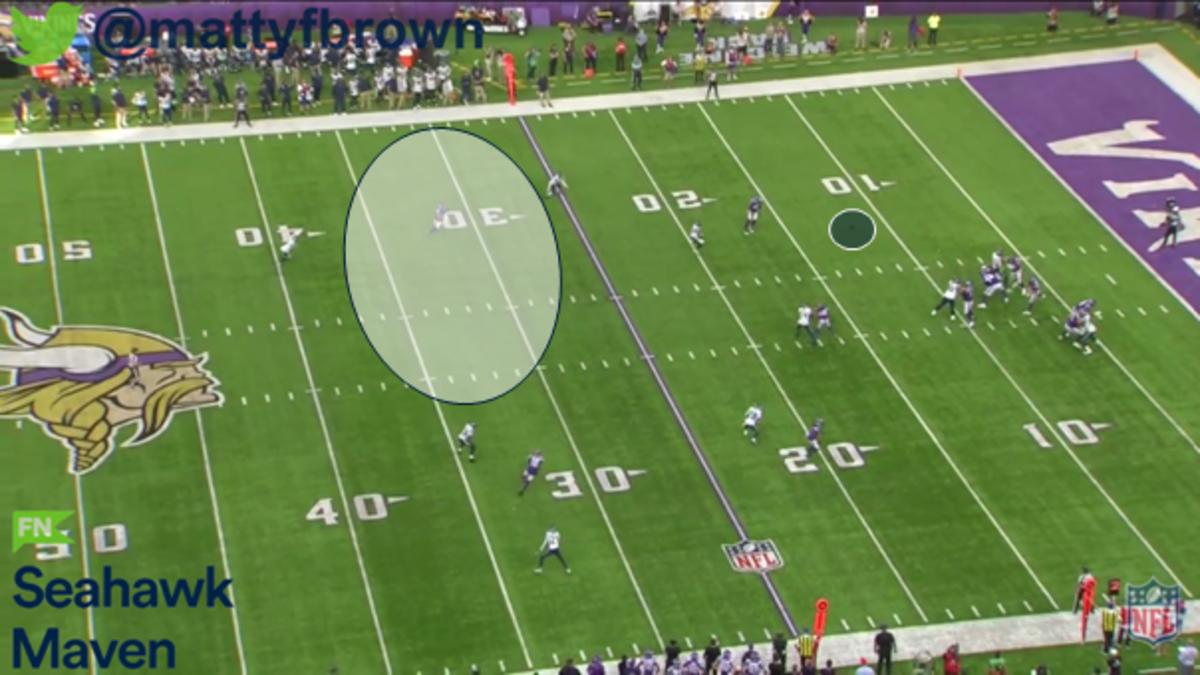
— Ultra Rare Tape (@UltraRareTape) September 30, 2021
Most coverage busts happen because the communication between players is not to the standard required. That was the case on the easy first down the Seahawks allowed on 3rd and 5. With Seattle in a man-to-man defense, Brooks was confused pre-snap over whether he should pick up the receiver one-on-one or whether Adams should. He appeared dissatisfied with Adams' hand-signal.
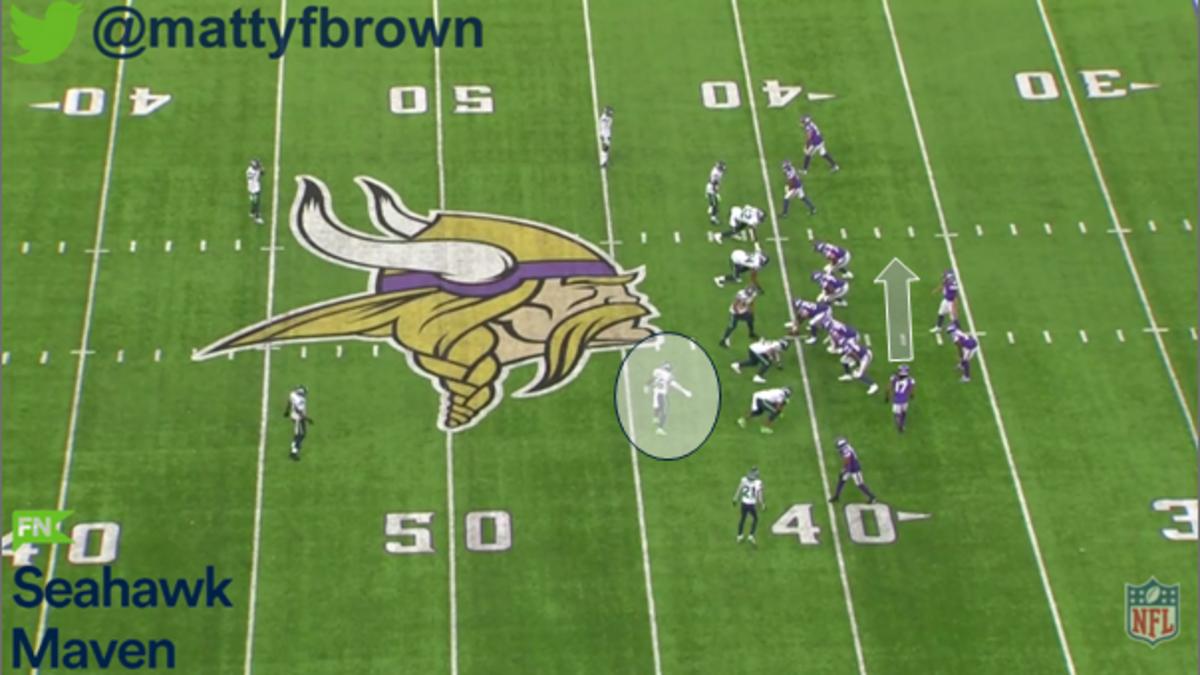
As the Vikings shifted into a gun trips formation, Brooks then looked to Wagner for what to do on the play. Wagner appeared to tell him to play a "mole" check, which changes cover 1 robber defense (where the strong safety rotates into the low hole as a robber) into cover 1 hole defense (where the linebacker instead plays the low hole and the strong safety matches up in man-to-man)
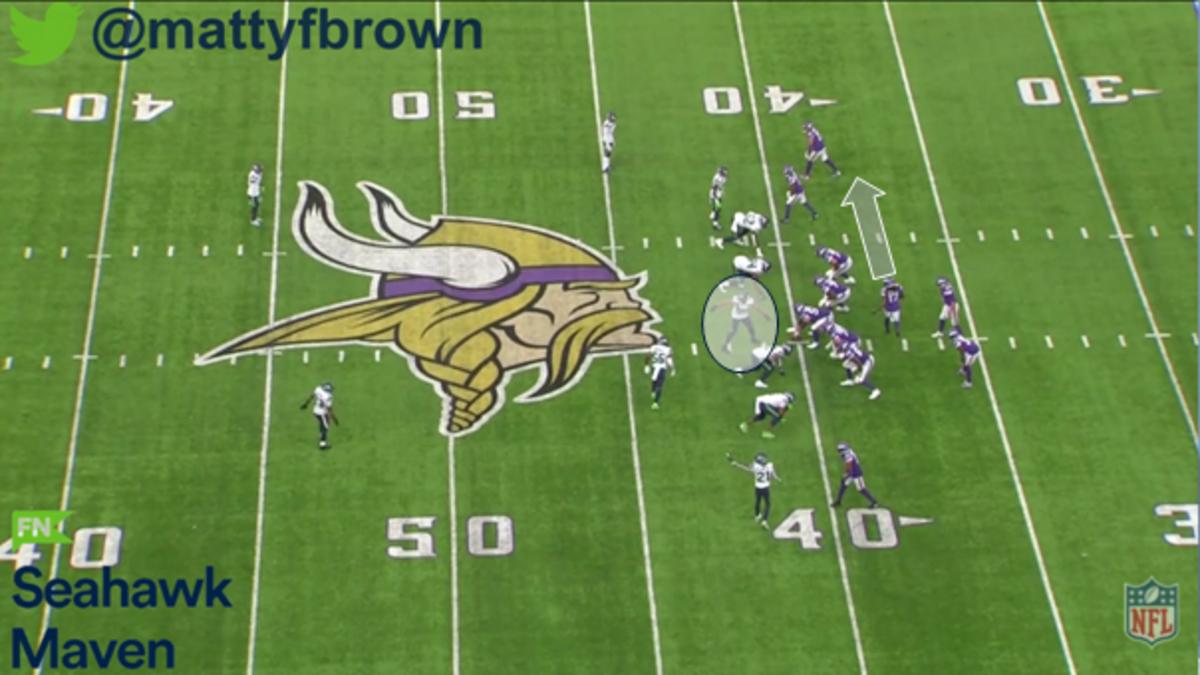
Adams was not involved with the Brooks-Wagner conversation. It's also possible that the sideline did not communicate the man coverage call effectively. The result was that Brooks played in the low hole and Adams played like a robber, while a receiver was totally uncovered into the flat for a simple first down.
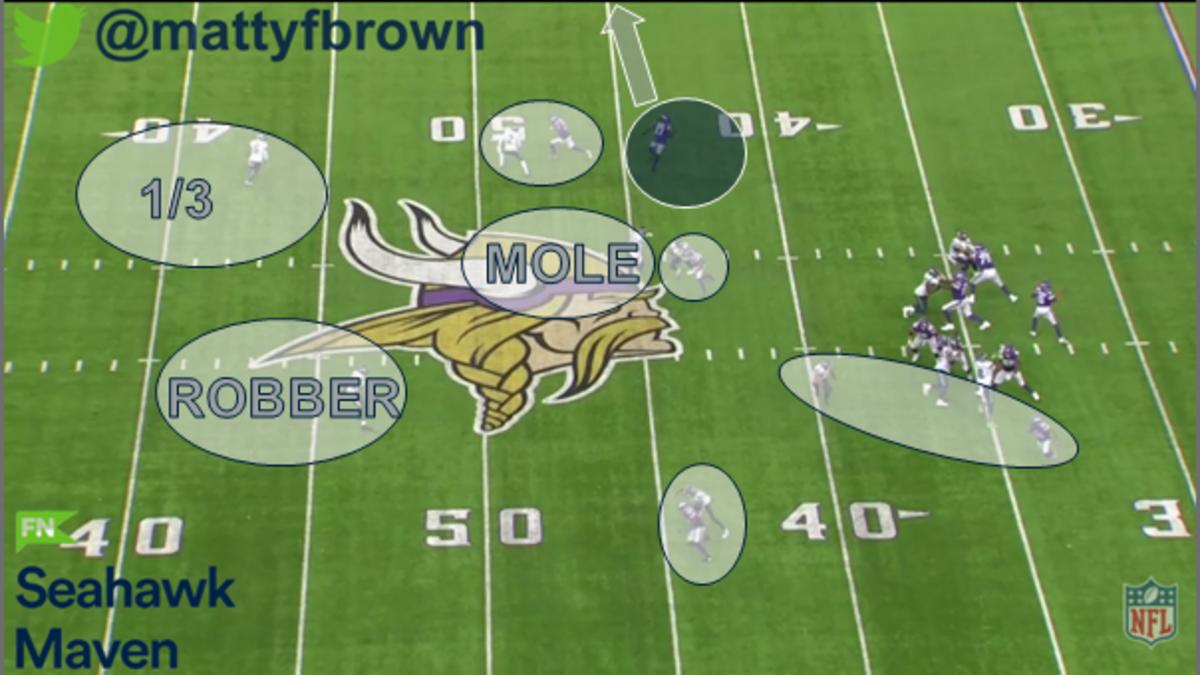
Brooks, understandably, was visibly frustrated after the play.
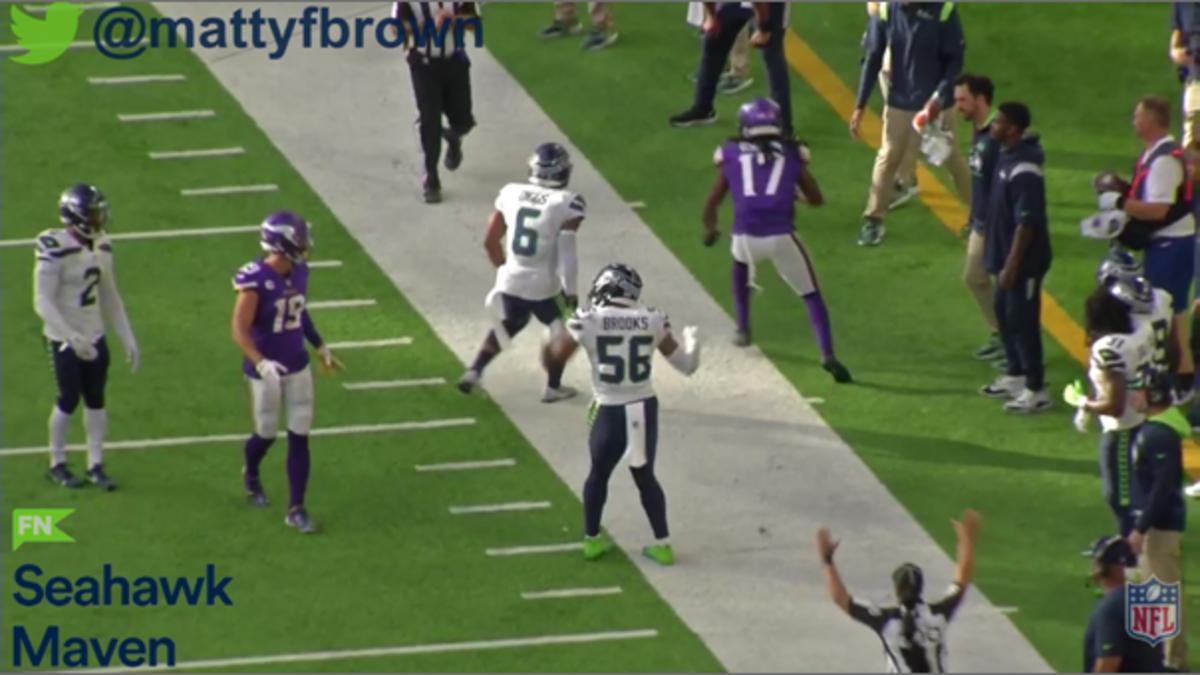
— Ultra Rare Tape (@UltraRareTape) September 30, 2021
Finally, we have Flowers' bust. This was a simple 3-deep, 3-under fire zone coverage for the Seahawks, the most obvious mistake on the broadcast. Minnesota shifted into the empty trips bunch combination.
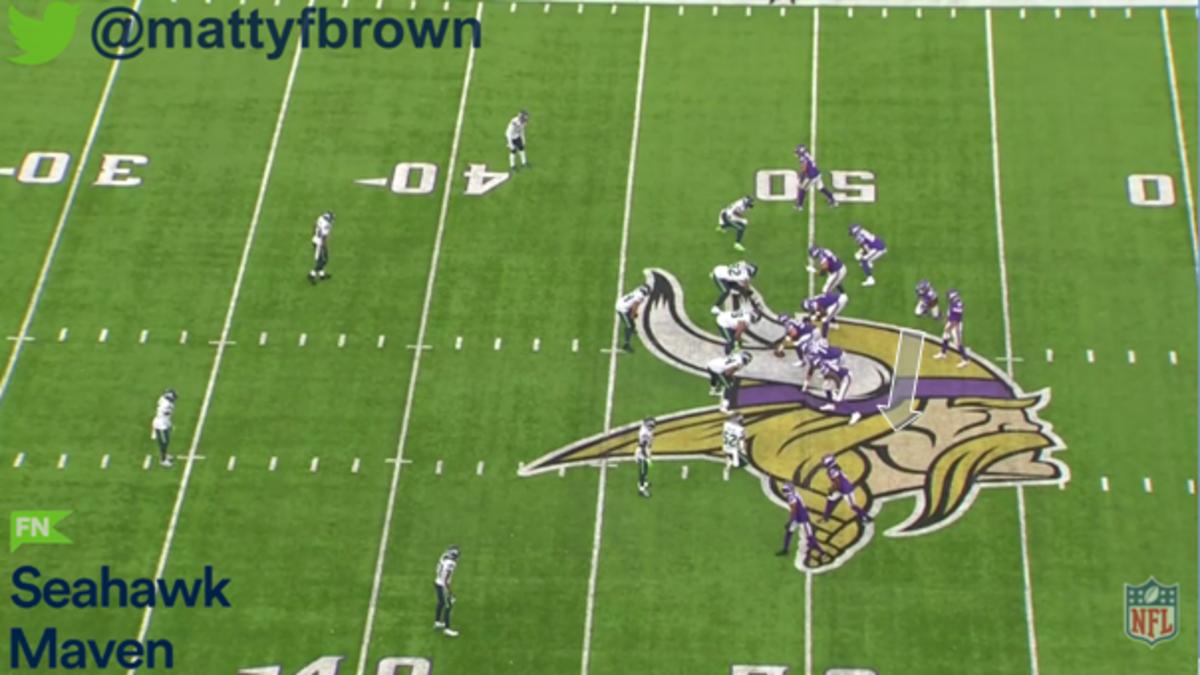
And Flowers seemed to overthink the look, perhaps confusing himself with man rules or non-pressure coverage. Or even not knowing that Wagner was blitzing?
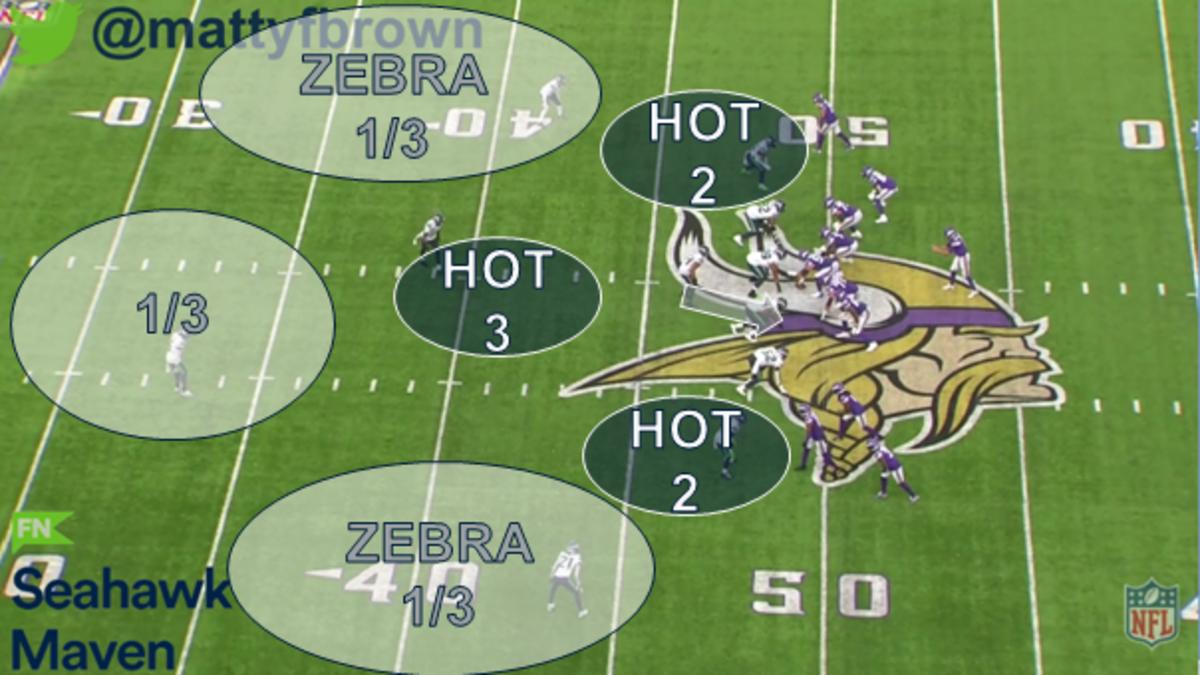
Seattle played empty formations aggressively with its underneath defenders in this game, aware that there was very little run threat to be concerned with. Fire zones themselves are more aggressive, as the underneath compensates for having one less guy in the pass defense.
So while the cornerbacks do need to be aware of multiple receiver sets, their zebra principles soon become a case of locking onto the final No. 1 receiver in what essentially becomes man-to-man coverage. The Vikings switch-released out of the bunch and the distribution soon became apparent.
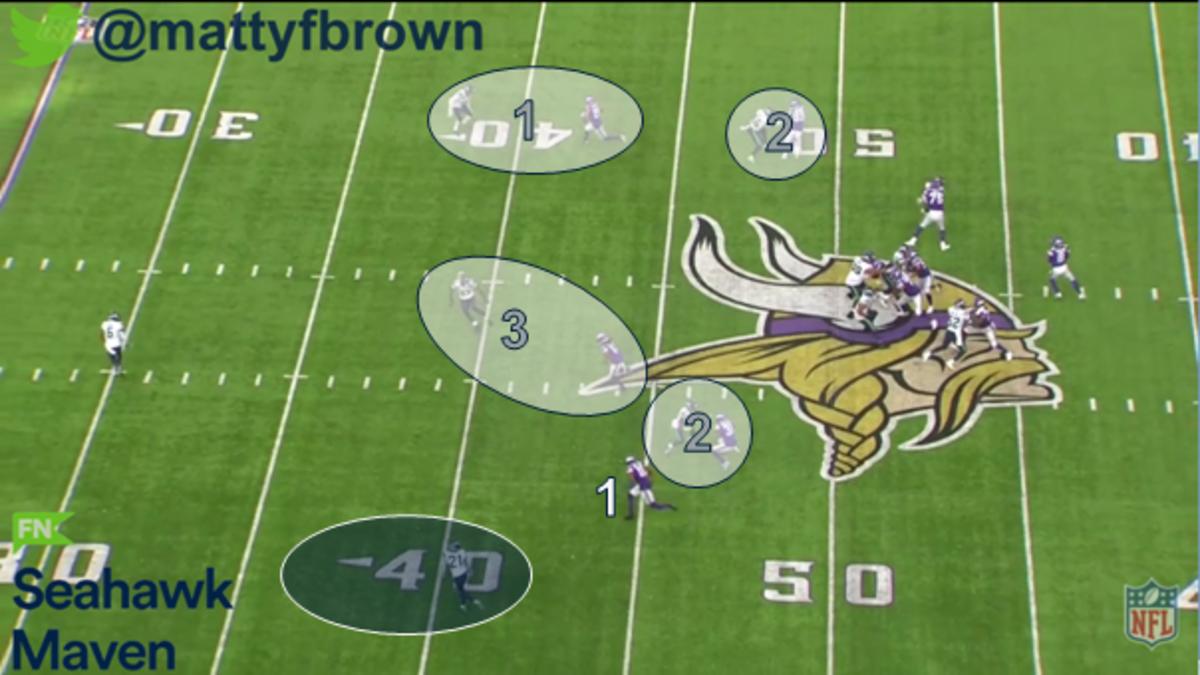
Yet Flowers played this like he would non-pressure cover 3 trips technique, maintaining outside and deep leverage with zero urgency to squeeze or gain ground on the No. 1 receiver. This led to a complete disaster over the middle of the field.
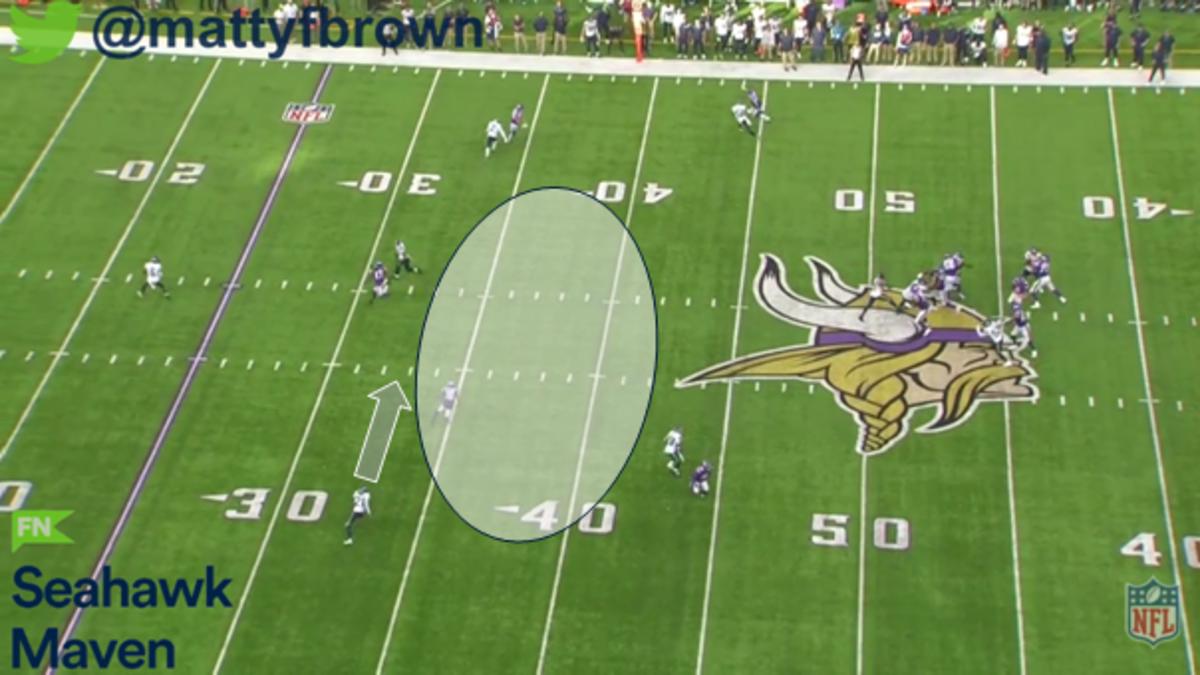
The play somehow looks worse on All 22.
— Ultra Rare Tape (@UltraRareTape) September 30, 2021
This led to an awkward, heated exchange with defensive backs coach DeShawn Shead on Seattle's sideline, which the television cameras captured. Shead seemed to be saying that Flowers should have followed the final No. 1 receiver over the field, because it's a pressure coverage. (Please ignore the Twitter username!)
Não consegui entender o que o Flowers falou, mas dá pra entender o Deshawn Shead perguntando algo do sobre a rota in que o CB deveria ter acompanhando pic.twitter.com/zI8a26xUy1
— Alexandre Castro (@alexcastrofilho) September 28, 2021
This is a basic pressure coverage from the Seahawks; it's nothing fancy. Flowers was playing with a lack of confidence throughout the game, aligning too far off and opening his gate too early in press coverage also.
The absence of defensive passing game coordinator Andre Curtis can partially explain these mistakes.
“Well I don’t think anytime you have your coach not there, I think the voice that you’re normally hearing, calming you down, teaching you, coaching you throughout, you know it certainly had an impact,” defensive coordinator Ken Norton Jr. evaluated on Wednesday.
“That’s a factor, I promise you that that’s a factor, unfortunately," Carroll said postgame of Curtis' asbence. "You know, Dre has a real positive effect with our guys and you know, suddenly he’s out of the mix and we missed him, we missed him today.”
Yet the rudimentary nature of the mistakes does speak more to the defense trying to work in too many additional elements. It wasn't a scheme issue, as some heated players said afterwards either. No, this was just basic execution.
“We just didn’t play to our level," summarized Norton. "Defense is something that’s a togetherness, it’s a constant battle. Offenses are really good now, guys really need to communicate, play well together for a sustained amount of time. It’s a consistent high level over the entire game."
This was, in many ways, a return to the blowout loss in Buffalo last season. Indeed, Carroll was asked about whether a similar meeting to his post-Buffalo solution would take place between him and Norton.
“We’re working on it, we have plans," Carroll responded on Monday. “Yes, I can answer that, effectively and clearly, that we have plans.”
However, for Carroll, the 2021 defensive issues do not match last year.
"I don’t feel it’s the same because we’ve been around together more so, that was a lot of newness and all, but it always helps and in a situation where that was a communication challenge situation yesterday. So there was some stuff that happens, but we’re not in the same, we’re in a different kinda place right now."
Instead, returning to executing the very basics is what the Seahawks will do. Adams put it best: "We just didn’t execute, And we took an L. Just how it goes, man."
Man, was that frustrating last Sunday. Man, would it be nice to see Seattle play sound football for an entire game.
“We need to see four quarters of consistent football, and we didn’t have it today, it wasn’t there," Carroll stated in Minneapolis.
"Real serious, real serious," Carroll illustrated of the defense's vibe heading into the important game with the 49ers. "They want this to go the way our expectations are designed and that means we’ve got to play better."
Not only that, but Carroll admitted that "tuning in" was what has been missing from the defense and what they will hope to accomplish on Sunday.
"And I think, coming out of Monday, in the meetings on Monday and showing the film and showing where the concerns were, the plays we could have made and the decision we could have made, you know, and all that, you know everybody’s real tuned in you know?
"We try to tune everything in every time forever, but I think there’s a little bit of a different feel about it, they want to prove it, they want to prove that we’re on the right track and we’re gonna go win a bunch of games.”
San Francisco is the opportunity for the defense to get right and back up all of these words. No more busts.
